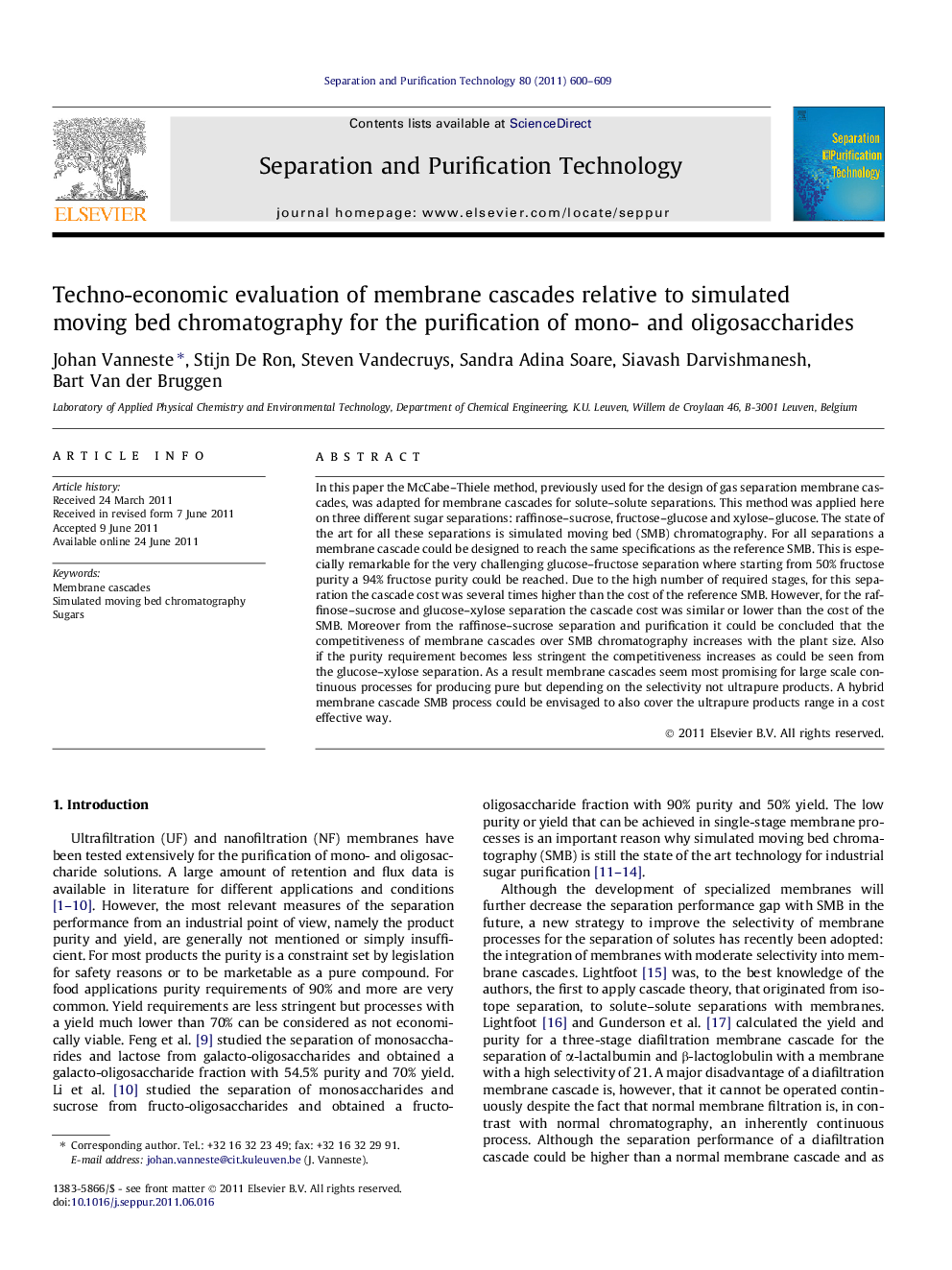| Article ID | Journal | Published Year | Pages | File Type |
|---|---|---|---|---|
| 642499 | Separation and Purification Technology | 2011 | 10 Pages |
In this paper the McCabe–Thiele method, previously used for the design of gas separation membrane cascades, was adapted for membrane cascades for solute–solute separations. This method was applied here on three different sugar separations: raffinose–sucrose, fructose–glucose and xylose–glucose. The state of the art for all these separations is simulated moving bed (SMB) chromatography. For all separations a membrane cascade could be designed to reach the same specifications as the reference SMB. This is especially remarkable for the very challenging glucose–fructose separation where starting from 50% fructose purity a 94% fructose purity could be reached. Due to the high number of required stages, for this separation the cascade cost was several times higher than the cost of the reference SMB. However, for the raffinose–sucrose and glucose–xylose separation the cascade cost was similar or lower than the cost of the SMB. Moreover from the raffinose–sucrose separation and purification it could be concluded that the competitiveness of membrane cascades over SMB chromatography increases with the plant size. Also if the purity requirement becomes less stringent the competitiveness increases as could be seen from the glucose–xylose separation. As a result membrane cascades seem most promising for large scale continuous processes for producing pure but depending on the selectivity not ultrapure products. A hybrid membrane cascade SMB process could be envisaged to also cover the ultrapure products range in a cost effective way.
► McCabe–Thiele method was adapted for membrane cascades for solute–solute separations. ► Three different sugar separations: raffinose–sucrose, fructose–glucose and xylose–glucose. ► Only for fructose–glucose the cascade cost was significantly higher than the SMB. ► Increasing plant size increases competitiveness of membrane cascades. ► Decreasing purity requirement increases competitiveness of membrane cascades.
